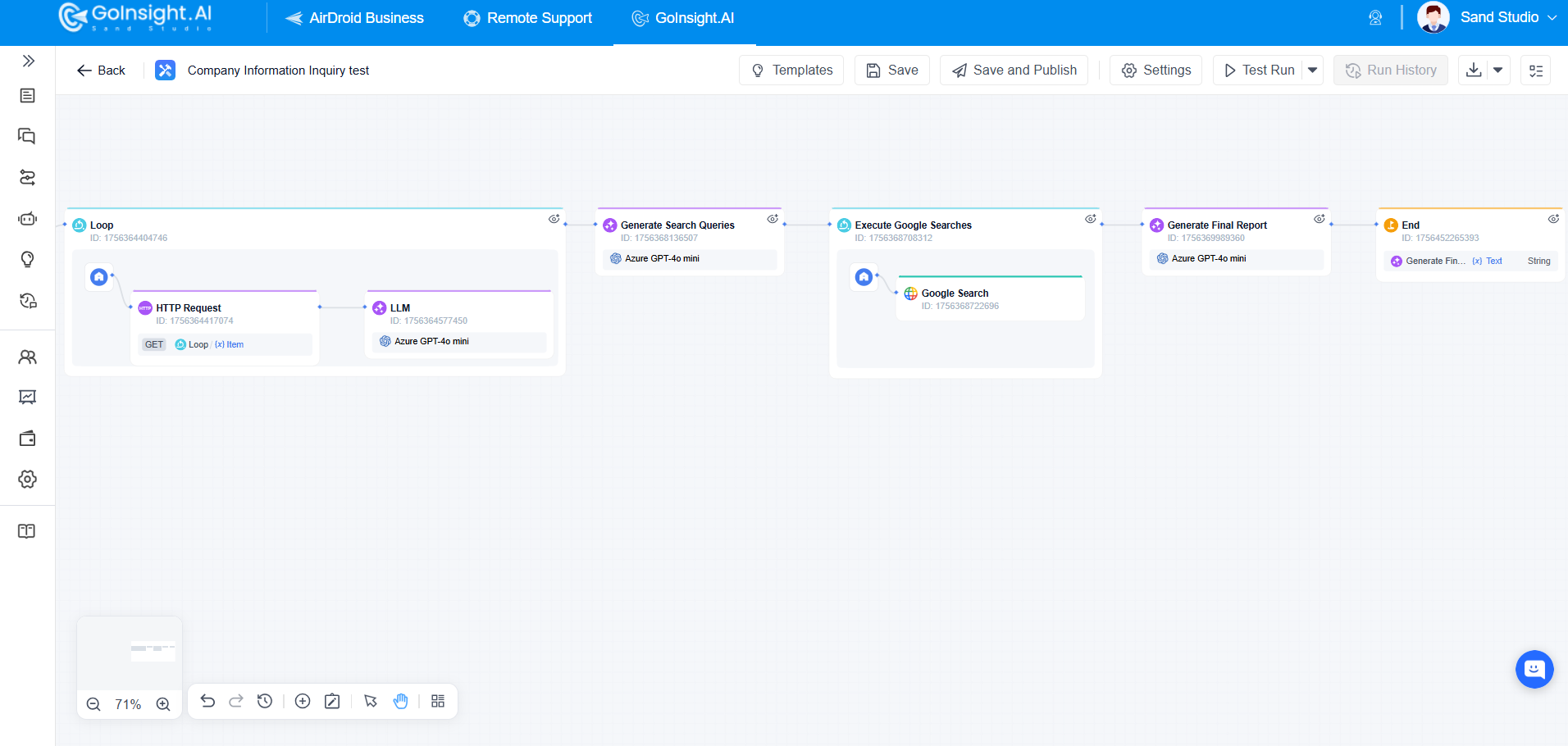- Two Root Flaws in Sales Intelligence
- 1. Unverified Basic Data
- 2. Missing Budget and Intent Data
- Real-World Impact: Case Studies on Data Failure
- Case Study on Flaw 1: The Multi-Million Dollar Failure of Dirty Data
- Case Study on Flaw 2: The Intent Data "Buyer's Remorse"
- Common Strategies to Address the Root Flaws
- Manual QA and Scrubbing
- Legacy Data List Purchasing
- Traditional Intent Data Platforms
- Manual Research & Sales Triggers
- Gaps in Current Solutions & New Opportunities
- The Gaps in Current Solutions
- The New Opportunity - AI-Automation Workflow
Sales intelligence turns raw leads into real opportunities, but "dirty data" often undermines the process. This includes unverified details and missing context, like outdated contacts or inaccurate intent signals.

According to SyncMatters, "Within a year, 70% of CRM records become erroneous," making data decay the rule, not the exception. This can result in misdirected outreach, poor targeting, and lost revenue.
This article breaks down the two core flaws behind dirty data, accuracy and intent, and how modern AI tools can solve them.
Two Root Flaws in Sales Intelligence
1Unverified Basic Data
This flaw stems from data degradation; when information like contact info, company details, changed phone numbers, and other CRM fields 'decay' over time.

As employees change roles or companies restructure, data that was once accurate becomes stale.
This could be something like a typo in someone's name, a wrong job title, improper formatting, or duplicate contacts. Without regular verification, sales teams chase invalid leads or waste time on outdated records.
- The Impact:
Decayed data leads to lower conversion rates, misdirected outreach, and inflated customer acquisition costs.
This can also erode trust in the CRM, leading teams to rely on intuition rather than data-backed insights.
2Missing Budget and Intent Data
If basic information like names or titles is accurate, teams may instead lack deeper, 'contextual' signals. This includes whether a lead has the budget, authority, or intent to buy.
Incomplete data leaves teams 'blind,' unable to forecast or prioritize leads effectively.

According to Inscyle, "Failing to focus on data maintenance will also cost your sales teams". Unmanaged, inaccurate data that is not regularly standardized, enriched, and segmented bottlenecks CRM performance and decision-making.
- The Impact:
Poor pipeline visibility, lower ROI from campaigns, inconsistent revenue predictability, and time-wastage by nurturing low-value leads instead of focusing on high-intent buyers.
Real-World Impact: Case Studies on Data Failure
Case Study on Flaw 1: The Multi-Million Dollar Failure of Dirty Data
In 2015, Vodafone UK suffered an 11.4% sales drop in one quarter, with total losses hitting £59 million in fines and revenue.
What went wrong?
Vodafone had attempted to consolidate 28.5 million customer accounts across seven billing systems into one centralized CRM platform.
However, during migration, the company faced an avalanche of customer complaints; billing top-ups weren't reflected, canceled contracts continued being charged, etc.
The root cause was inaccurate, incomplete, and outdated customer data. Account statuses, price plan records, and billing details were incorrectly migrated and never verified after the transfer.
This "unverified basic data" directly caused widespread billing errors and regulatory breaches.
- Key Takeaway
Even advanced CRM infrastructure fails if the data it's based on is unmanaged and not verified.
When basic information isn't validated, it doesn't just affect sales prospecting; it disrupts customer relationships, invites regulatory penalties, and damages brand reputation.
Case Study on Flaw 2: The Intent Data "Buyer's Remorse"
On paper, intent data tools like "6Sense" seem to be a treasure trove for companies; a clear look into businesses that are most likely to buy. But while the promise seems almost too good to be true, the reality often doesn't match the hype.
What went wrong?
Platforms like 6Sense offer "ready-to-purchase" leads. However, a large number of 6Sense users reported that what they received was unreliable data and misleading insights that failed to generate real sales opportunities.
Sales teams chasing 'high-intent' accounts are frequently met with false positives; when contacted, they learn these businesses had little to no actual buying interest.
The biggest issue with intent data platforms is that they lack context and data accuracy. VPN masking, casual browsing activity, or irrelevant employee interactions were often misread but presented as genuine buyer intent.
As a result, sales teams wasted time pursuing the wrong leads, marketing budgets were drained targeting unqualified prospects, and "hot leads" rarely converted without measurable ROI despite significant investment.
- Key Takeaway:
If accounts are flagged as 'high-intent' because of a Google search, the system itself is flawed and lacks any insight into real-world leads. Companies relying on unverified signals risk building sales strategies on noise, rather than truth.
The result? Misallocated budgets, wasted sales cycles, and a distrust of tools that fail to deliver real buyer intent.
Common Strategies to Address the Root Flaws
Addressing Flaw 1 - Data Verification
1. Manual QA and Scrubbing
The most important strategy is manual quality assurance (QA) and scrubbing of internal data. This process keeps databases clean, standardized, and searchable, offering a clear view of potential leads.
- Regular Data Audits: Set clear standards for data quality (accuracy, completeness, formatting, etc) and perform periodic manual checks of your CRM or database.
- Data Scrubbing: Use human review to find and correct errors such as misspellings, outdated contacts, missing fields, inconsistent formatting, etc.
- Hybrid Manual + Automated Approach: Utilize automations to handle bulk cleansing, but maintain human oversight for complex and high-value data.
2. Legacy Data List Purchasing
Another common approach is supplementing or refreshing outdated databases with purchased data lists. This helps fill in the gaps of missing information and expands reach.
However, this only works when paired with strict verification to prevent importing even more inaccurate data.
- After purchasing lists, ensure to apply manual QA and scrubbing practices to validate contacts, remove duplicates, and match them to your ideal customer profile (ICP).
- Cross-check purchased lists against multiple providers/public data sources like LinkedIn to confirm information is up-to-date and accurate.
- Ensure purchased data adheres to regional privacy regulations. Non-compliant data lists can result in legal exposure and damage to brand trust.
Addressing Flaw 2 - Strategic Intent
1. Traditional Intent Data Platforms
Sales and marketing teams utilize traditional intent data platforms to identify "in-market" businesses. They work by collecting third-party behavioral signals like website visits, Google search activity, engagement with content, etc, to flag potential "buying intent".
However, this is an inherent flaw since the data can be misleading and, many times, inaccurate.
That said, they can still be useful if used as an augmentation, rather than automation.
- Combine Intent Data w/ Real Insights: Cross-reference third-party intent signals with internal CRM activity, email engagement, and other requests to validate genuine buyer interest.
- Human Oversight for Context: Train sales teams to interpret intent alerts with context. Verify whether an account's activity aligns with real purchasing interest before reaching out.
- Use Intent as Prioritization Tool: Rather than basing decisions on intent data, leverage it as a starting point for deeper research.
2. Manual Research & Sales Triggers
Companies are also switching back over to manual research and sales trigger analysis to improve accuracy.
While the method is time-intensive, it significantly reduces false positives by prioritizing outreach based on validated need, rather than algorithmic guesses.
- A Hybrid Approach: Combine intent data tools for early detection, and manual trigger research for confirmation of intent to improve lead quality.
- Manual Monitoring: Manually monitor concrete indicators such as funding rounds, leadership changes, hiring patterns, product launches, etc. These can all point to genuine buying intent.
- Set Up Sales Triggers: Set up alerts for when target accounts perform relevant actions (download whitepapers, open pricing pages, etc.). Utilize triggers to time outreach when intent is stronger.
Gaps in Current Solutions & New Opportunities
The Gaps in Current Solutions
Even with better tools and cleaner workflows, most sales and marketing systems still fail to maintain reliable, up-to-date data.
- Data Reliability: Manual cleanup and legacy databases are often inundated with stale, incomplete information, forcing teams to double-check and patch gaps constantly. Vague Intent Insights: Intent data tools only skim the surface, like clicks, searches, and site visits, without clarifying what actually drives buyer interest. Fragmented Workflows: Validation, enrichment, and outreach often exist in separate systems. Teams waste hours juggling tools instead of focusing on leads.
Even with these strategies in place, the same challenges persist; automation alone can't solve the problem. What's needed instead is AI-powered augmentation that improves accuracy, context, and understanding of intent in real time.
The New Opportunity - AI-Automation Workflow
GoInsight's AI-driven workflow introduces a smarter approach to data refinement and intent analysis, addressing both dimensions of the problem: Accuracy and Intent Depth.

Phase 1. Collecting a Company's Home Page Data
By inputting a company's website URL, the workflow gathers up to 17 key data points, including name, industry, headquarters, and overview. Each detail is assigned a confidence score to gauge data quality.
Phase 2. Deep Mining Subpages for Insight
The AI then digs deeper into relevant subpages like "About", "Career", "News", etc. This uncovers richer context and is then rated for accuracy to build a multi-dimensional company profile.

Phase 3. External Source Supplementation & Verification
Any information that's missing or has a low confidence score, GoInsight's workflow automatically generates Google queries to fill in the gaps and verify facts. This step ensures data points are accurate and up-to-date, fixing the "dirty data" dilemma at the source.
Phase 4. Comprehensive Report Generation
Finally, all verified data, both internal and external, is merged into a single structured report. Any low-confidence entries are replaced with stronger sources, and the workflow generates a clean, complete, insight-rich company profile.
With a single URL, GoInsight transforms unreliable sales data into an intelligent, rich foundation for prospecting; combining automated verification and context-driven enrichment.
Conclusion
Reality is, dirty data isn't just a technical issue; it's a silent sales killer hiding in plain sight.
From inaccurate CRM records to misleading intent signals, every unverified detail takes away from revenue potential and leads to teams wasting time on prospects that'll never convert.
With AI-powered workflows like those from GoInsight, sales team takes the guesswork out of the equation, replacing it with precision; verified, enriched data to identify real opportunities, act faster, and prospect smarter.






Leave a Reply.